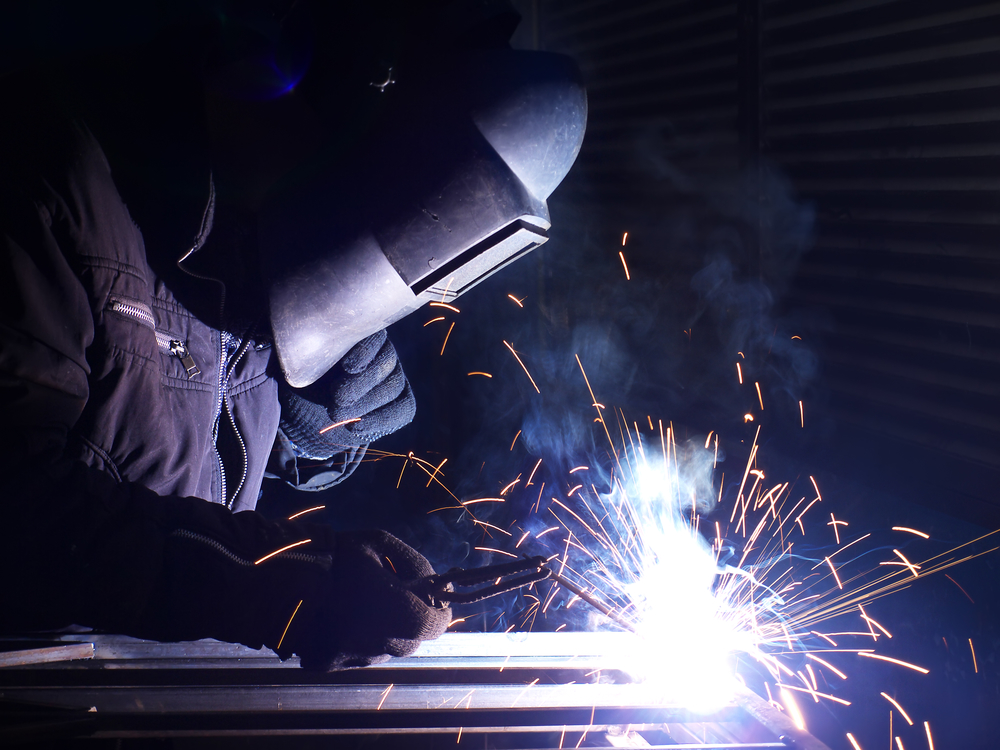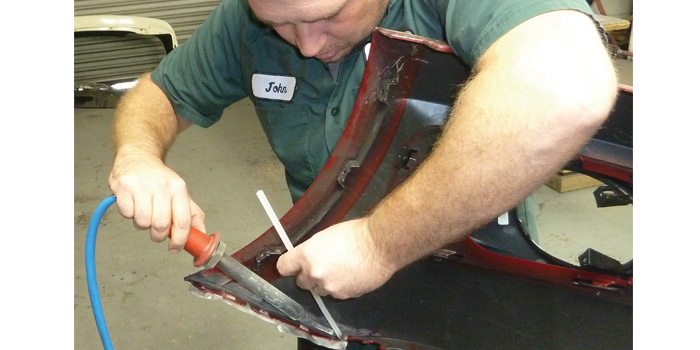All About Welding: Key Insights Into Techniques and Finest Practices for Success
Welding encompasses a variety of techniques, each fit for specific products and applications. Comprehending these approaches, such as GMAW, SMAW, and TIG, is crucial for achieving suitable outcomes. The right devices and safety techniques can not be neglected. As preparation and repairing play critical duties in the welding process, grasping these elements can greatly boost the high quality of the last product. What are the key variables that guarantee a successful weld?
Comprehending Various Welding Techniques
Welding techniques incorporate a variety of approaches, each fit to specific applications and products. Among one of the most typical techniques are Gas Steel Arc Welding (GMAW), Shielded Metal Arc Welding (SMAW), and Tungsten Inert Gas Welding (TIG) GMAW, also called MIG welding, is preferred for its speed and versatility, making it optimal for thin products. SMAW, or stick welding, is preferred for its simpleness and performance in exterior atmospheres, particularly with thicker steels. TIG welding uses accuracy and control, making it ideal for complex job and non-ferrous metals (Belgrade Welding). Each strategy has its distinct benefits and factors to consider, permitting welders to select the very best method based upon the job's requirements, material kind, and wanted outcomes. Comprehending these techniques is crucial for successful welding
Vital Welding Tools and Devices
While numerous welding methods call for particular skills, the appropriate devices and devices are equally necessary for attaining top quality results. Vital welding devices consists of welding equipments, which vary relying on the technique-- such as MIG, TIG, or stick welding. Protective equipment, consisting of helmets, aprons, and gloves, guarantees safety and security and convenience throughout the process. Additionally, components and clamps assist safeguard materials in position, making certain accuracy in welds. Consumables like welding rods, cable, and protecting gas are additionally important parts that affect the top quality of the weld. Devices such as mills and cutters facilitate surface area prep work and post-weld completing, contributing to a specialist outcome. Buying high-grade equipment ultimately improves the efficiency and performance of welding jobs.
Security Practices in Welding
Correct safety and security practices are necessary in the welding industry to safeguard workers from potential hazards. Welders need to use appropriate individual protective devices (PPE), including helmets with correct shading, handwear covers, and flame-resistant clothes. Appropriate ventilation is essential to lower exposure to damaging fumes and gases generated throughout the welding process. In addition, employees must be educated in the appropriate handling of welding equipment to prevent mishaps. Fire safety steps, such as keeping flammable products far from the welding location and having fire extinguishers easily available, are essential. Routine examinations of tools and work spaces can help identify potential hazards before they result in mishaps. By adhering to these security practices, welders can produce a safer working setting and lessen threats related to their trade.
Preparing Materials for Welding
Preparing materials for welding is an important action that substantially influences the top quality and integrity of the last item (Montana Mobile Welding and Repair Welding). Correct prep work entails cleansing the surfaces to eliminate contaminants such as dirt, oil, and rust, which can endanger the weld. Strategies such as grinding, fining sand, or making use of solvents are commonly utilized to accomplish a clean surface. Furthermore, ensuring that the products fit with each other snugly is necessary; spaces can result in weak welds. It's also important to take right into account the placement and positioning of the elements, as this will certainly influence the ease of welding and the final result. Selecting the appropriate filler material and ensuring compatibility with the base metals is important for accomplishing strong, sturdy welds.
Tips for Achieving High-Quality Welds
Achieving top notch welds requires attention to information and adherence to finest methods throughout the welding process. Appropriate joint preparation is essential, guaranteeing surface areas are cost-free and tidy from impurities. Selecting the ideal filler material and welding method based upon the base steels is essential for perfect bonding. Keeping consistent travel rate and angle while welding can advertise and stop flaws harmony. Additionally, managing warm input is important; too much warmth can bring about bending and compromised joints. If essential, regularly inspecting the welds throughout the process permits for prompt adjustments. Lastly, employing ideal post-weld therapies, such as cleaning and stress alleviation, can improve the resilience and honesty of the weld, eventually making certain a successful outcome.
Troubleshooting Typical Welding Issues
Welding usually provides obstacles that can affect the top quality and stability of the end product. Typical issues such as porosity, irregular weld grains, and getting too hot can emerge, each needing details troubleshooting strategies. Understanding these problems is necessary for welders to enhance their skills and accomplish perfect outcomes.
Porosity Problems Clarified
Porosity can usually be forgotten, it continues to be an important issue in Continue welding that can compromise the stability of an ended up product. Porosity refers to the visibility of little gas pockets within the weld grain, which can compromise the joint and lead to premature failure. This trouble typically emerges from contaminants, dampness, or improper securing gas insurance coverage throughout the welding procedure. To reduce porosity, welders must verify that the base products are completely dry and tidy, make use of proper shielding gases, and keep consistent welding criteria. Consistently evaluating the tools and atmosphere can additionally help identify potential problems before they show up in the weld. Resolving porosity successfully is essential for achieving strong, durable welds that fulfill quality requirements.

Inconsistent Weld Beans
Irregular weld grains can greatly influence the top quality and toughness of a finished item. Various factors add to this problem, including incorrect travel rate, incorrect amperage setups, and inconsistent electrode angles. When the welder relocates too swiftly, a bead might show up slim and lack penetration, while moving too slowly can create excessive buildup. Additionally, making use of the wrong amperage can cause either undercutting or too much spatter, both of which concession weld integrity. The welder's technique, such as inconsistent torch activity, can likewise result in unequal bead look. To alleviate these issues, welders need to focus on preserving consistent, controlled movements and making sure appropriate devices setups to attain harmony in their welds. Uniformity is crucial to attaining dependable and solid welds.
Overheating and Bending Issues
Extreme warm during the welding process can result in significant overheating and warping issues, impacting the architectural integrity of the work surface. These issues often show up as distortion, which can jeopardize placement and fit-up, making further assembly testing. Aspects contributing to overheating consist of the selection of welding parameters, such as voltage and take a trip rate, in addition to the type of material being welded. To reduce these concerns, welders should keep regular traveling speed and suitable warm input while checking the workpiece temperature level. In addition, preheating or post-weld heat therapy can help minimize anxieties brought on by fast air conditioning - Montana Mobile Welding and Repair Belgrade. Routine inspection and adherence to finest practices are essential in preventing getting too hot and ensuring the durability and reliability of bonded structures
Regularly Asked Questions
What Are the Occupation Opportunities in the Welding Market?
The welding market provides varied career chances, including positions as welders, educators, inspectors, and designers. Experts can operate in production, building and construction, aerospace, and auto sectors, gaining from solid demand and competitive wages in various roles.
How Can I Boost My Welding Speed Without Sacrificing High Quality?
To improve welding speed without giving craftsman welder up quality, one should exercise reliable methods, keep equipment, enhance setups, and improve hand-eye coordination. Routine training and my company seeking responses can likewise greatly add to attaining faster, high-quality welds.
What Qualifications Are Readily Available for Welders?
Numerous accreditations exist for welders, consisting of those from the American Welding Society (AWS), the National Facility for Building Education And Learning and Study (NCCER), and various industry-specific organizations. These qualifications boost employability and show skill proficiency.
How Does Welding Affect the Characteristics of Metals?
Welding influences the residential or commercial properties of metals by changing their microstructure, which can result in modifications in firmness, stamina, and ductility. Heat input and cooling rates throughout the process greatly affect these product attributes.
Can I Bonded Dissimilar Metals With Each Other?
